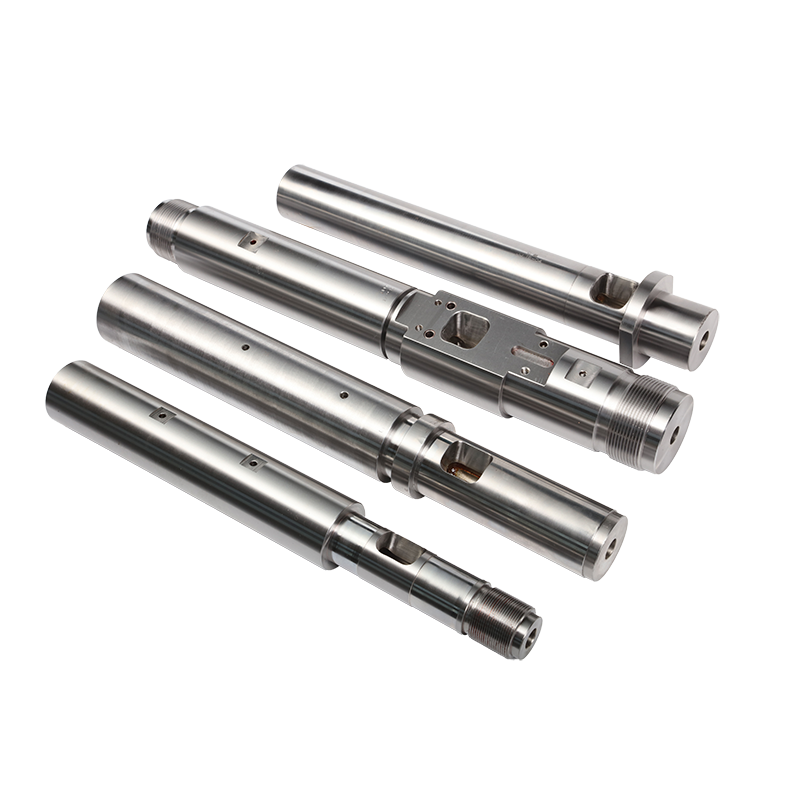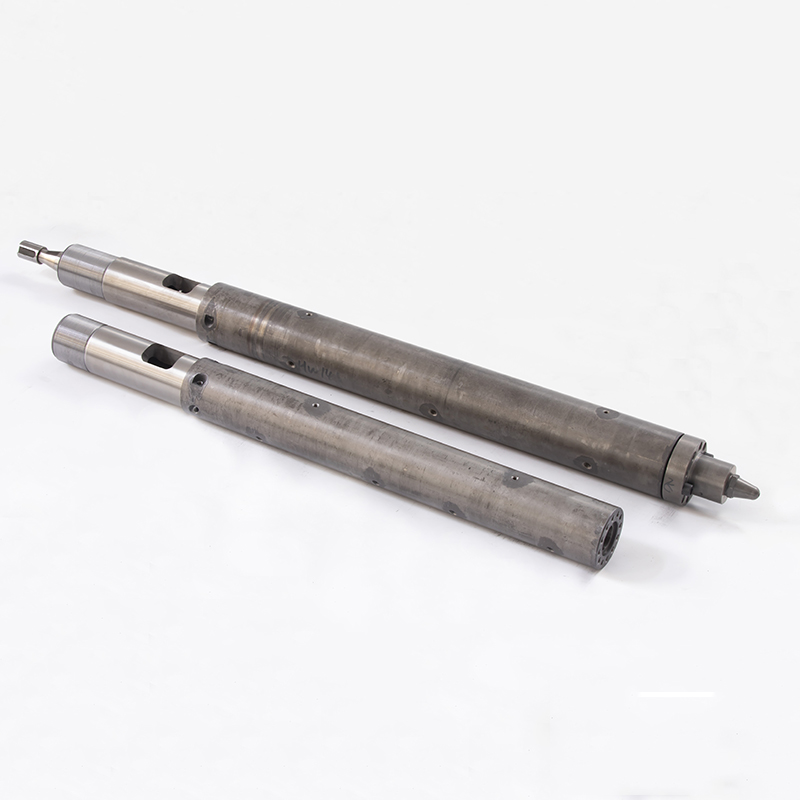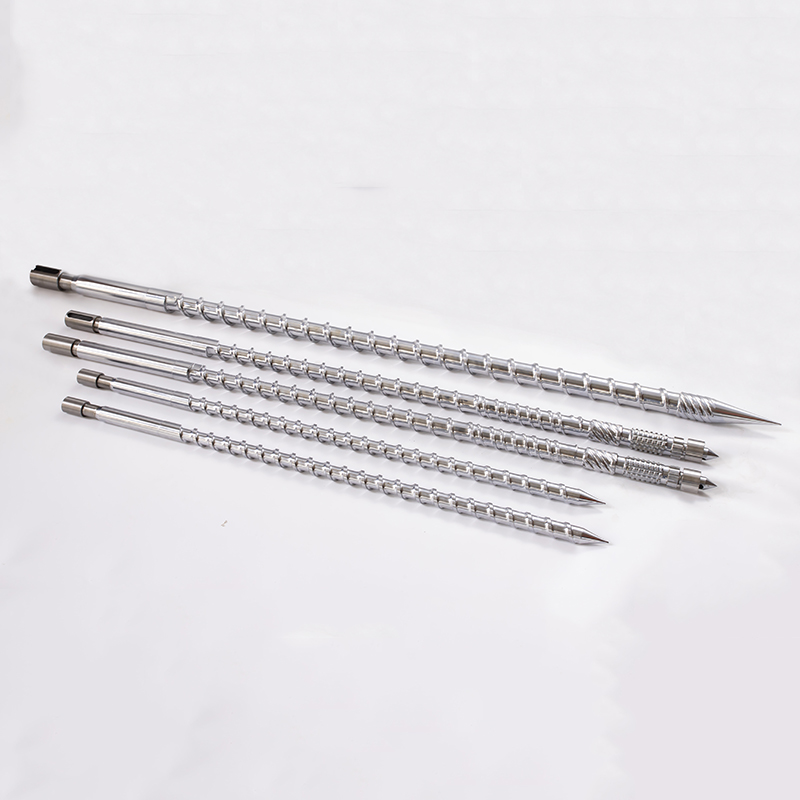The conical (flat) twin-screw has the characteristics of uniform plasticizing and mixing, high output, stable quality, wide range of application, long service life and direct molding of PVC powder. With the corresponding molding die and auxiliary machine, all kinds of thermoplastic, especially hard cone twin-screw extruder can be made. PVC powder can be directly extruded into plastic products such as pipes, plates, sheets, rods, films and profiles. It can also complete the modification of various plastics and the granulation process of powder. The conical twin-screw extruder has stable performance, which can make the melt well plasticized and extruded at a lower temperature. The cylinder is equipped with a cast aluminum heater, which has high thermal efficiency, fast and even temperature rise, and is equipped with a cooling fan. The transmission part is specially designed. The cone (flat) twin-screw is driven by a new type of variable frequency motor or a DC motor, which has stable operation, large transmission torque and high efficiency. It can achieve stepless and stable speed regulation, high precision and energy saving through imported frequency converter or DC governor. The intelligent double display digital temperature controller is adopted, with high control accuracy and small temperature fluctuation. With overload protection and fault alarm, screw core oil circulation constant temperature, barrel oil cooling and other functions, and equipped with vacuum exhaust pipe device and quantitative feeding device.
Preparation before start-up of taper (flat) twin screw
1. After the main engine is heated to the specified temperature and kept warm for 20min, turn to the manual turning gear normally according to the screw. There is no abnormal noise and friction between the two screws, the barrel and the two screws during several turns. If there is any abnormality, the screw shall be pulled out and reassembled before installation.
2. Check the rotation direction of the main machine and feeding motor. Facing the discharge head of the main machine, if the screw element is right-handed, the screw rotates clockwise. Check the operation of each feeder according to the matching requirements.
3. Clean the storage bin and hopper. After confirming that there are no impurities and foreign matters, fill the storage bin with materials and start the automatic feeding machine. When the material in the hopper reaches the predetermined level, the feeder will automatically stop feeding. For the operation with vacuum exhaust requirements, add clean tap water to the specified water level in the condensate tank, close the vacuum pipeline and valves of the condensate tank, and check whether the sealing ring of the exhaust chamber is in good condition.
4. Check whether the water, electricity and gas systems of the equipment are normal, to ensure that the water and gas channels are unblocked and leak free, whether the electrical system is normal, whether the heating system, temperature control and various instruments work reliably; test run the auxiliary machine at low speed without load, and observe whether the equipment operates normally; start the vacuum pump of the setting platform, and observe whether the work is normal; oil and lubricate the lubricating parts of various equipment. If any fault is found, it shall be eliminated in time.
5. Head and set. According to the variety and size of the product, select the head specification. Install the nose in order.
6. Take out the molds with production specifications in the mold library and disassemble the molds. Clean up the impurities in the mold cavity, install the Motti of the mold on the connecting flange of the extruder, turn the mold until the rear mold face is flush with the flange face, leave a gap between the two flanges, use the level ruler to adjust the upper plane of the mold to the horizontal position, lock the flange with the diagonal screw, and the upper, lower, left and right gaps of the flange shall be consistent. In other parts of the mould, tighten the mould screws diagonally, install the heating plate and thermocouple, plug in the power line, set the temperature of the barrel and mould to 100-120 ℃ for heating, and pay attention to whether the electrical instruments of each heating system are normal during heating.
7. Install the mold on the guide rail of the stereotyping platform, start the shaping stage to move forward, make the mold close to the die face of the mould, and close it tightly. All the surfaces are tightly attached to the die, and there are no gaps around it. Then adjust the feed port of the die setting die for the speaking mould, and lock the screws of the fixed die in the same straight line and plane. After the setting die is locked, open the setting table, adjust the setting die and water tank in the same line, connect the water and air pipe of the setting die, and check whether there is water leakage.
8. After heating each section of the barrel and cone (flat) twin screw to the set temperature, raise the temperature of each section of the barrel and die to the temperature required for extrusion of PVC wood plastic products, keep the temperature at 20-30 minutes, and then prepare to start the machine.




